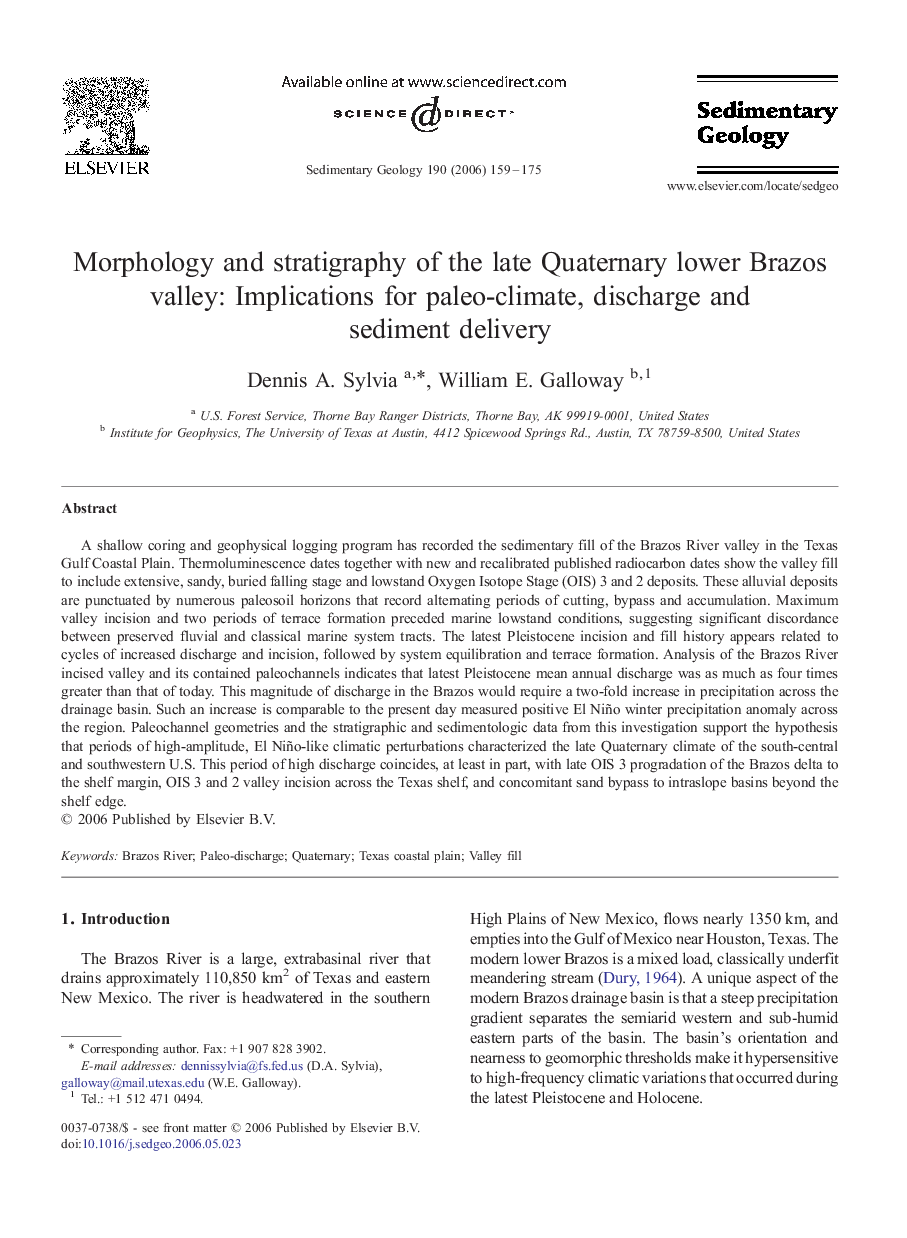| Article ID | Journal | Published Year | Pages | File Type |
|---|---|---|---|---|
| 4690972 | Sedimentary Geology | 2006 | 17 Pages |
Abstract
A shallow coring and geophysical logging program has recorded the sedimentary fill of the Brazos River valley in the Texas Gulf Coastal Plain. Thermoluminescence dates together with new and recalibrated published radiocarbon dates show the valley fill to include extensive, sandy, buried falling stage and lowstand Oxygen Isotope Stage (OIS) 3 and 2 deposits. These alluvial deposits are punctuated by numerous paleosoil horizons that record alternating periods of cutting, bypass and accumulation. Maximum valley incision and two periods of terrace formation preceded marine lowstand conditions, suggesting significant discordance between preserved fluvial and classical marine system tracts. The latest Pleistocene incision and fill history appears related to cycles of increased discharge and incision, followed by system equilibration and terrace formation. Analysis of the Brazos River incised valley and its contained paleochannels indicates that latest Pleistocene mean annual discharge was as much as four times greater than that of today. This magnitude of discharge in the Brazos would require a two-fold increase in precipitation across the drainage basin. Such an increase is comparable to the present day measured positive El Niño winter precipitation anomaly across the region. Paleochannel geometries and the stratigraphic and sedimentologic data from this investigation support the hypothesis that periods of high-amplitude, El Niño-like climatic perturbations characterized the late Quaternary climate of the south-central and southwestern U.S. This period of high discharge coincides, at least in part, with late OIS 3 progradation of the Brazos delta to the shelf margin, OIS 3 and 2 valley incision across the Texas shelf, and concomitant sand bypass to intraslope basins beyond the shelf edge.
Keywords
Related Topics
Physical Sciences and Engineering
Earth and Planetary Sciences
Earth-Surface Processes
Authors
Dennis A. Sylvia, William E. Galloway,
